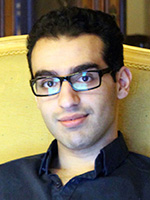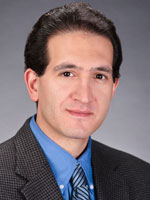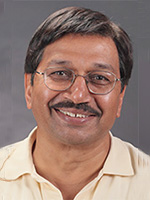Recent News
NQVL Design Phase Award
October 1, 2025
CHTM Joins NSF's NQVL Pilot Projects
August 9, 2024
OSE PHD, Dr. Xuefeng Li - Wins The Outstanding Interdisciplinary Graduate Programs Award
May 10, 2024
Dr. Ali Rastegari - 2024 OSE Best Dissertation Award Winner
May 10, 2024
News Archives
CHTM research team’s work is highlighted in Laser Focus World magazine
June 28, 2017 - Sharon Steely

Behsan Behzadi

Mani Hossein-Zadeh

Ravinder K. Jain
After its appearance in arXiv.org, a paper by Behsan Behzadi, Mani Hossein-Zadeh, and Ravinder K. Jain, “Design of a New Family of Narrow Linewidth Mid-Infrared Lasers,” was highlighted in the current (June 2017) issue of Laser Focus World as one of four “technical advances from around the globe” in the World News section.
Nearly 70,000 qualified optoelectronics professionals from around the world currently subscribe to Laser Focus World, a monthly magazine which provides comprehensive global coverage of optoelectronic technologies, applications, and markets.
The paper by Behzadi et al. describes a theoretical study of the development of a family of narrow-linewidth mid-infrared (mid-IR) lasers of novel design: distributed-feedback Raman fiber lasers (DFB RFLs) based on π-phase-shifted fiber Bragg gratings (PPS-FBGs) written in a glass fiber called a low-phonon-energy fiber. The family of fiber lasers spans the spectral region of 2.5 to 9.5 μm with no gaps.
This theoretical study aims to demonstrate the feasibility of the new Raman laser type; specifies the optimum design for single-mode or single-frequency lasers of this type; and sketches out approaches for future experimental efforts.
The lasers are potentially viable because stimulated Raman scattering with high Raman gains can be achieved in low-loss optical fibers at most wavelengths in the transparency windows of the fibers by using moderate pump powers at pump wavelengths corresponding to a broad range of Stokes shifts. In addition, cascading multi-Stokes processes open up new wavelength possibilities.
The model shows that ultranarrow linewidths of <1 MHz are achievable. The researchers believe that optimizations could lead to the ability to pump these fiber lasers with more than 50 W of power, resulting in an ultranarrow-linewidth output power in the watt-level range for some wavelength ranges.
The lasers can be tuned by mechanically stretching the FBGs, for example, by using piezoelectric actuators, achieving continuous tunabilities on the order of 1 nm.
References
B. Behzadi et al., arXiv:1705.02535v1 [physics.optics] (May 6, 2017)
Begun on August 14, 1991 to host high energy physics papers on a local web server at Los Alamos National Laboratory, arXiv.org evolved into an e-print service in the fields of physics, mathematics, non-linear science, computer science, quantitative biology, quantitative finance and statistics. In many fields of mathematics and physics, almost all scientific papers are self-archived on the arXiv repository, currently hosted at Cornell University. It passed a million articles by the end of 2014.
“Mid-IR Lasers: Ultranarrow-linewidth mid-IR laser family could span 2.5 to 9.5 μm,” by John Wallace, Senior Editor, Laser Focus World:
- Article in the current issue of Laser Focus World magazine
- On the Laser Focus World website
- Article as PDF
Authors
Behsan Behzadi is a research assistant with the Center for High Tech Materials (CHTM) at The University of New Mexico. He is currently working towards his Ph.D. in Optical Science and Engineering at CHTM.
Behzadi’s advisor is Mani Hossein-Zadeh, Associate Professor of Electrical and Computer Engineering at UNM and the leader of the Microwave Photonics Group. Ravinder K. Jain, Behzadi’s co-advisor, is a Professor of Electrical and Computer Engineering with a joint appointment in Physics and Astronomy at UNM. Both are faculty members of CHTM and the Optical Science and Engineering Program (OSE) at UNM.


